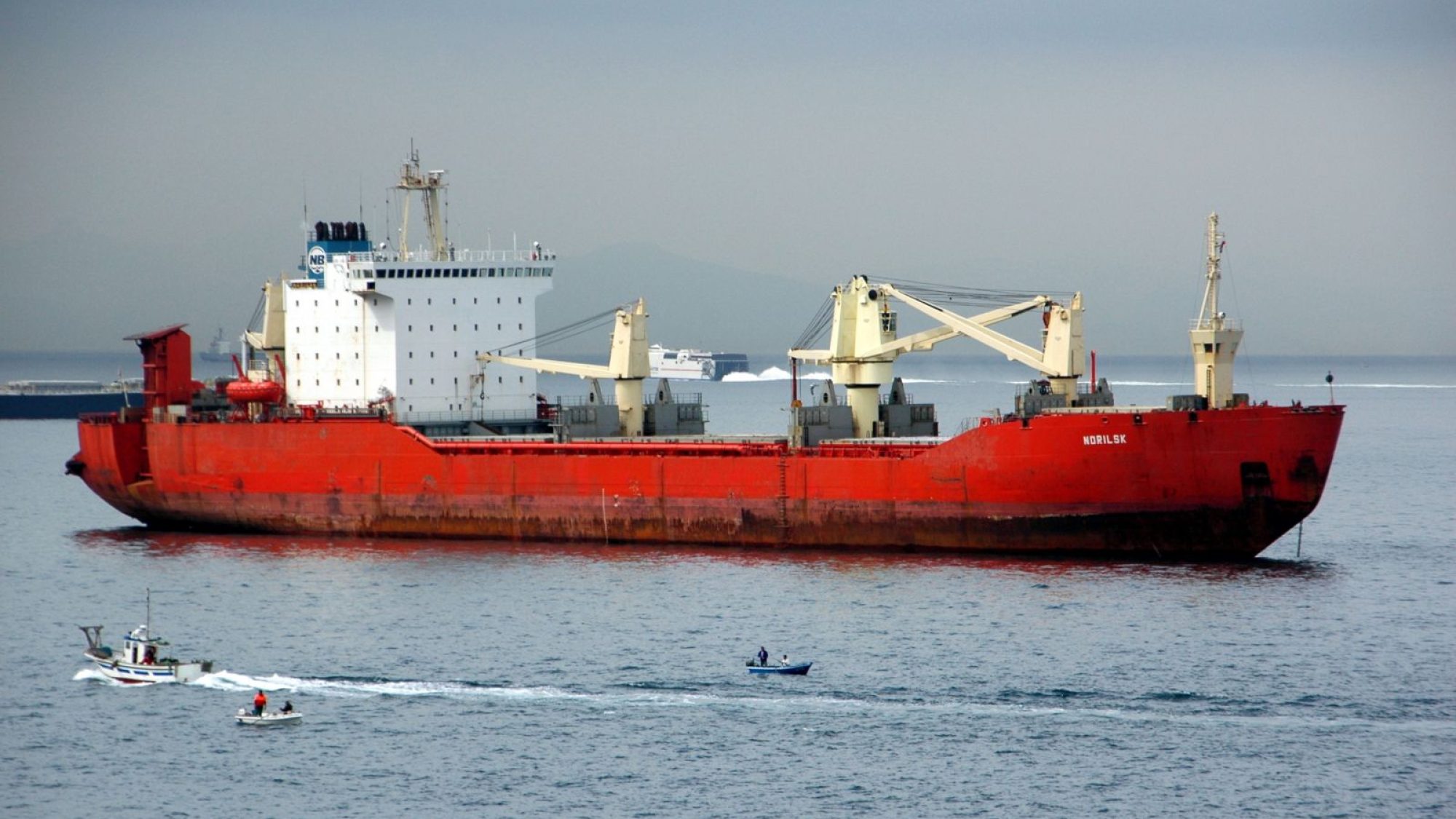
Title: Arctic Seaways in the Age of Climate Change
With the advent of climate change and the melting of sea ice, Arctic passages could soon become major seaways for international trade. Arctic states like Russia and Canada and newcomers like China have expressed either their concern over or their sustained interest in this evolution. This article examines the Arctic shipping strategies among major players in the region.
Ever since international forums began to discuss the impact of climate change on Arctic sea ice at the turn of the millennium, many believed that diminishing sea ice would result in the development of transit routes across the Northwest Passage (NWP) and the Northern Sea Route (NSR). While the excitement about the advent of a new cold war over the Arctic’s resources and future seaways is receding, several papers still depict the Arctic as an oil and gas-rich region, bound to be the site of a “race” for the control of natural resources and strategic shipping lanes.
Twenty years later, Arctic shipping has indeed expanded considerably, but the picture differs from what analysts once projected. Destinational traffic—ships coming to the Arctic to perform economic activity such as fishing or loading cargo—appears to be the driver of Arctic shipping expansion, while transit traffic–— merely passing by to take advantage of shorter routes—remains marginal. Russia, Canada, and China have each developed distinct Arctic strategies. China and Russia bet on the development of commercial traffic along the NSR, while Canada focused primarily on the environmental protection of the NWP. While overall traffic, driven by natural resource extraction, has increased, the volume of transit traffic remains relatively small. As destinational traffic falls under the jurisdiction of the destination port’s state, conflict over sovereignty in the Arctic has been limited. However, the issue of traffic control for environmental protection purposes has been raised since oil extraction could raise the risk of pollution in case of an accident. Despite moderate traffic growth, the issue of Arctic shipping remains important due to the region’s fragile environment and the marginalized native communities who reside there. Both of these factors warrant a tight control of shipping through norms on naval architecture, vessel ice-class and equipment requirements, crew experience, and non-discriminatory mandatory permission requests, which would be required by all vessels to enter Arctic waters.
Divergent Russian and Canadian approaches
Russia has a long tradition of viewing the NSR as a potential artery for shipping and economic development. The Northern Sea Route Administration was established in 1932 with the mandate to provide transportation for Arctic communities and enable the extraction of Arctic resources. After the demise of the Soviet Union, traffic collapsed, but the onset of climate change provided an opportunity to reverse the trend. The Russian government hoped expanding traffic could promote economic development, especially through natural resource extraction. Russia also hoped to attract transit fees to help pay for the maintenance of icebreakers and foster regional influence through the development and control of a strategic seaway for world trade. Meanwhile, the Canadian government was actively monitoring shipping during the 1950’s, in cooperation with the United States, during the construction of the Distant Early Warning (DEW) radar line, but did not display a desire to develop commercial shipping in the Arctic.
The Russian government aims to expand its strategy of increasing total traffic. In hopes of the Arctic becoming a major shipping lane, Russia has invested heavily in infrastructure to develop the Northern Sea Route with new or refurbished terminals and icebreakers. In 2018, Russian President Vladimir Putin signed a decree whereby total traffic was to reach eighty million metric tons (Mt) by 2024.
Canada, however, is approaching the Arctic’s emergence into the global economy differently. In the Canadian archipelago, sea ice is much thicker and extends farther than along Russia’s Arctic shore. This, and weak declarations of interest by shipping companies explain Canadian authorities’ remaining skepticism about the potential advantages of transit shipping along the NWP.[1] Transport Canada, the department in the Canadian government tasked with regulating transportation, has never publicly advertised the passage among shipping companies, as ice has remained in the NWP over the past few years.
This messaging contrasts with Russia’s highlighting of the benefits of transit through the NSR as an alternative to the Suez Canal, especially after a container ship blocked the canal in March 2021. Russia’s state nuclear energy corporation, responsible since 2018 for the management of operations along the NSR, “made big fun of the trouble for global shipping caused by the wedged cargo ship in the Suez Canal,” while establishing the NSR as a profitable alternative. This public relations push, however, was met with skepticism from the shipping industry after more than twenty cargo ships were stuck in NSR ice for weeks in November 2021. This incident damaged the NSR’s credibility. Thus, despite the long-term trend towards a melting sea-ice cover, major interannual variability remains regarding the extent and rhythm of the melt and refreeze, limiting shippers’ willingness to commit to NSR routes. It appears that while Canada clearly opted for a wait-and-see strategy, Russia is actively promoting the possibility of transit along the NSR, as well as extractive projects that fuel destinational shipping. The long-term result of this discrepancy could be an already noticeable significant difference in traffic, equipment, and risks for the environment.
Chinese opportunism
Asian shipping companies, such as those from South Korea, Japan, and China, were often depicted by the media and scholars as among the most likely to be interested in Arctic shipping because of Asian economies’ dependence on maritime trade. Since 2007, China has displayed a sustained interest in both Arctic seaways and improved access to natural resources in the region. China’s Arctic policy declared the country’s intent to actively participate in the development of shipping routes: “China hopes to work with all parties to build a ‘Polar Silk Road’ through developing the Arctic shipping routes. It encourages its enterprises to participate in the infrastructure construction for these routes and conduct commercial trial voyages in accordance with the law to pave the way for their commercial and regularized operation.” China’s interest in the Arctic was marked by a flurry of scientific research papers since 2007 in which Chinese experts were optimistic about the country’s involvement in Arctic shipping and natural resource extraction. For instance, Yang Huigen, of the Polar Research Institute of China, predicted that the NSR would be responsible for 5 to 15 percent of China’s international trade by 2020. Despite such assertions, China’s Arctic commerce remains very small in 2021.
Despite media speculation about Chinese involvement in emerging Arctic seaways, high commercial risks, high costs, and unpredictability currently prevent such conjecture from becoming reality. Few Chinese shipping companies operate both in the Canadian and the Russian Arctic. Though Chinese shipping companies make up about 10 percent of total voyages and a quarter of transits through the NSR, their share is small (1.4 percent) in the Canadian Arctic, considerably outnumbered by other Asian companies.[2] Furthermore, China’s presence in the Russian Arctic is limited to three to four companies. Although the Chinese government may be interested in the Arctic as an economic asset, Chinese shipping companies display only a moderate interest in Arctic shipping routes.
Arctic maritime traffic in context
Though the uptick in commercial traffic in the NSR occurred slower than in the NWP, it increased quickly between 2010 and 2013. Transit traffic in the NSR climbed to seventy-one vessels in 2013, from a mere three vessels in 2008 and thirteen vessels in 2010, but dropped to eighteen vessels in 2015. Traffic, however, picked up with a new high of eighty-five vessels in 2021. While transit traffic in the NSR may continue to increase, it remains modest, especially when compared to the route’s destinational traffic or to transit traffic along major straits or canals like in the Strait of Malacca, the Suez Canal, or the Panama Canal. This transit level differs from media projections of heavy traffic along Arctic routes and pales in comparison to the 18,880 transits through the Suez Canal in 2019 or the 12,525 transits through the Panama Canal in 2021.
Though NSR transit is rather modest by world standards, it significantly outpaces the NWP, where commercial transit oscillates between 0 and 2 vessels per year. Pleasure crafts constituted most of the transit traffic until they, along with cruise vessels, were prohibited in 2020 because of COVID-19 concerns.
Traffic did expand in the Canadian and Russian Arctic. In the Canadian Arctic, 225 voyages were made in 2009 and 444 were made in 2021. Meanwhile, in the Russian Arctic, there were 1,705 voyages in 2016 and 2,739 voyages in 2021. This traffic was largely destinational and instrumental to the development of the extractive industry, which remains entirely controlled by the Russian and Canadian governments. Transit shipping remains controversial, however, as some states object to the control over the Arctic exerted by Ottawa and Moscow and their mandate that ships must get clearance prior to entering their waters. Nevertheless, transit traffic remains low in the Canadian Arctic and along the NSR, which currently do not represent strategic commercial arteries.
Conclusion
With Arctic Sea ice melting, many anticipated the creation of new trade routes that would boost world trade. Russia and China, in particular, hoped to participate in the development of these future seaways. Russia sought to develop Siberia and garner a strategic advantage; China hoped to diversify its trade routes and justify its ambition to participate in the region’s governance. Destinational shipping has driven Arctic shipping, with transit shipping remaining at modest levels, dashing both Russian and Chinese economic ambitions on that matter.
Sovereignty issues raised by transit traffic are thus limited. However, the NSR has increasingly become a tool for natural resource extraction in the Russian Arctic. As resources gradually deplete in southern Russia and new fields are discovered in the Russian Arctic, Russia has primarily promoted its extractive industry through Arctic destinational shipping along the NSR. Russia will likely fiercely oppose any challenge to its sovereignty over this route to defend its strategic shipping advantage. China is, likewise, actively promoting the expansion of resource extraction. These projects are likely to generate increased shipping traffic.
This raises the issue of environmental protection, as native populations have expressed concerns about the effects of expanded traffic on marine mammals and ecosystems. Though sea-ice has melted considerably, difficult shipping conditions and the risk of accidents remain. Coastal states, facing an expansion of destinational traffic motivated by natural resources extraction, should continue to enforce navigational standards since destinational traffic is subject to port regulations. Russia and Canada did so through the enactment of the Polar Code, in force since 2018, as well as other regulations. Canada has also formed non-binding plans to construct low-impact shipping corridors, designed in coordination with the local Inuit communities.
[1] Officials from the Canadian Coast Guard and the Ministry of Transportation. Personal communications with author, 2016, 2017, 2019.
[2] Canada: Canadian Coast Guard, Nordreg, Iqaluit; XST Xpert Solutions Technologiques (2021).
…
Frédéric Lasserre is Professor of Geography at Laval University (Quebec City, Canada). He acted as ArcticNet project director from 2010 to 2015, and heads the Quebec Council for Geopolitical Studies (CQEG).
Image Credit: Gerolf Drebes, CC BY-SA 3.0
More News

This article contends that South Africa’s 2025 G20 presidency presents a critical opening to shape governance of critical mineral supply chains, essential for renewable energy, digital economies, and national…

Germany’s economy is being throttled by a more competitive China that has usurped its previous manufacturing dominance in many industries. In response, Germany has doubled down on the China bet…

In 2021, the European Union (EU) attempted to assert itself in the Indo-Pacific arena to increase its geopolitical relevance by releasing an ambitious and multifaceted Indo-Pacific Strategy. However, findings from…